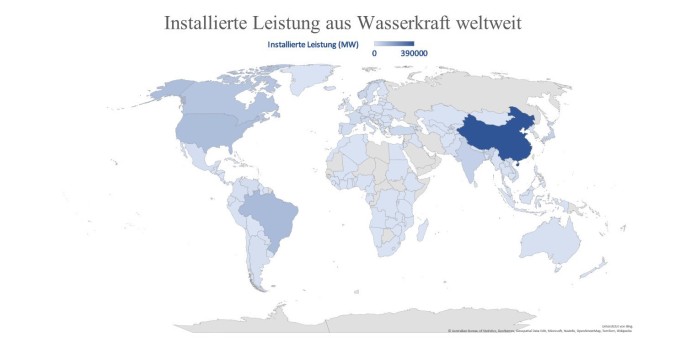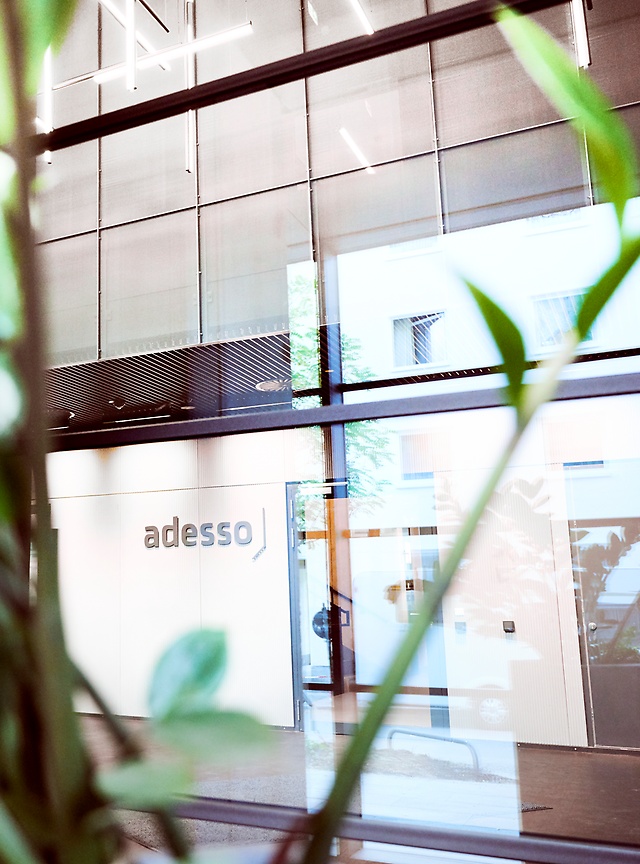13. January 2023 By Ellen Szczepaniak, Simon Bächle and Zoe Holdt
Hydropower – the old lady of renewable energies
Even before industrialisation, the kinetic energy of running water was used to power mills, timber mills and hammer mills, for example. Nowadays, the term hydropower mainly refers to converting this kinetic energy into electrical energy in a purpose-built hydropower plant. These power plants are not only environmentally friendly and – unlike many other renewable generation plants – subject to few fluctuations, they are also highly efficient and considered technically reliable.
In Germany, there are currently 7,300 hydropower plants with a combined installed capacity of about 5,600 megawatts (MW). Of these, 6,900 plants (94 per cent) have an installed capacity of less than one MW and are therefore considered small hydropower plants. The southern federal states have the greatest potential to utilise hydropower, as there are large differences in altitude in the water course in the foothills of the Alps.
And this is how it works
Converting energy in hydropower plants is based on the principle of conserving energy. It states that energy cannot be created or destroyed, but only transformed from one form into another.
In hydropower plants, the potential energy (also called potential energy) as well as the kinetic energy of the water is converted into mechanical energy by the falling water hitting a turbine and driving it. The turbine consists of a rotor fitted with blades. The water hitting these blades sets the rotor in motion and it starts turning. This movement is transferred to a generator, which converts the mechanical energy into electric current.
The energy conversion in hydropower plants can be summarised as follows:
- 1. The potential energy of the water is converted into kinetic energy when it falls from the reservoir into the riverbed.
- 2. The kinetic energy of the falling water is converted into mechanical energy when it hits the blades of the rotor and sets it in motion.
- 3. The mechanical energy of the rotating turbine is converted into electrical energy when it is transferred to the generator.
The total amount of energy remains constant throughout the energy conversion process. However, some of the energy is ‘lost’ in the form of heat, which is generated by friction, for example.
Types of hydropower plants
There are different types of hydropower plants, which differ mainly in where they are built and how they extract energy from the water. The most important types of hydropower plants are described below:
- 1. Storage power plants use the potential energy of water that is dammed up in a reservoir. A dam is used to back up and accumulate water, forming an artificial lake. The water is then drained through a pipe as needed. There is a turbine at the end of the pipe, which is driven by the incoming water. Storage power plants can be controlled and serve to cover peak loads and provide system services (such as balancing power). Pumped-storage power plants are a special case, as they are able to pump water from the lower basin back into the reservoir and are currently the common practice to store electrical energy.
- 2. Run-of-the-river power plants use the energy of flowing water to generate electricity. They are often built on rivers that contain enough water to drive the turbines constantly. Run-of-the-river power plants are typically used to cover the base load due to their continuous mode of operation.
- 3. Tidal power plants generate electricity through the force of the tidal range. They are usually built in coastal regions and use the force of the ocean currents caused by the ebb and flow of the tide.
- 4. Wave power plants convert the movement of ocean waves into electricity. These power plants are built in coastal regions in particular and, unlike tidal power plants, do not use the tidal range but the force of wave movements to drive turbines.
The installed capacity of hydropower plants worldwide can be seen in the following figure.

Source: Own representation according to IRENA 2022
Hydropower plants in a power plant network that is beneficial to the grid
As we have already mentioned, hydropower plants are able to provide system services and can thus be used for the benefit of the grid. Their low volatility during the electricity generation process means it is easy to predict how much power will be generated.
The VideKIS research project is aiming to regulate a virtual power plant network using a central control system so that primary control services can be provided. This requires accurate forecasts of the power that can be generated as well as reliable plants in order to meet the strict market requirements. The integration of hydropower plants provides a solid basis for generating reliable forecasts and thus offering primary control services exclusively from renewable energies,
As part of the project, two small hydropower plants in the Hochsauerland district in North Rhine-Westphalia will be integrated into the virtual power plant, which together have an installed capacity of 1.2 MW. A new type of controller enables the plants to offer primary control power. A first round of test trials is planned for spring 2023, and we will keep you up to date with further blog posts.
You will find more exciting topics from the adesso world in our latest blog posts.



